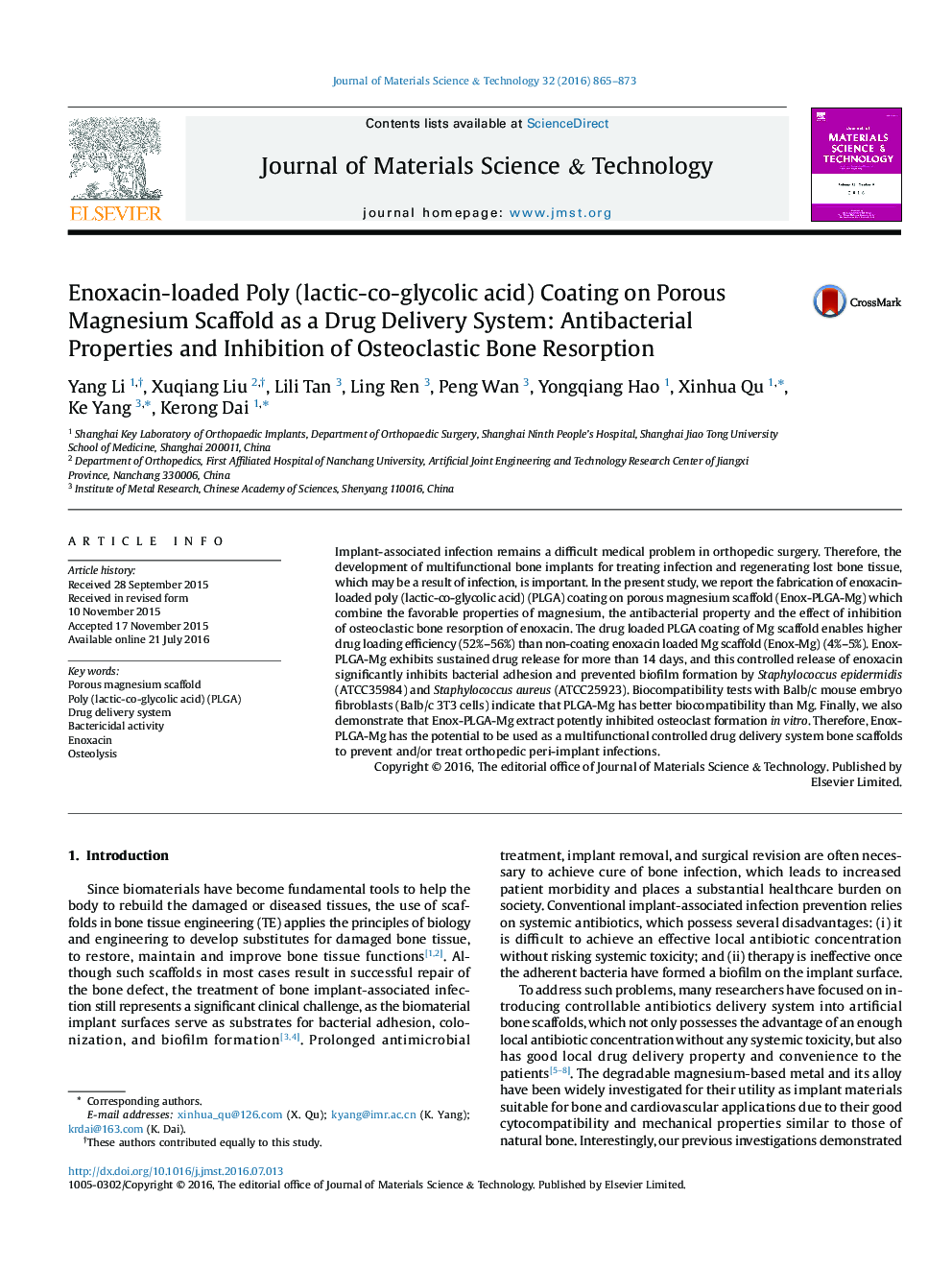| Article ID | Journal | Published Year | Pages | File Type |
|---|---|---|---|---|
| 1555725 | Journal of Materials Science & Technology | 2016 | 9 Pages |
Implant-associated infection remains a difficult medical problem in orthopedic surgery. Therefore, the development of multifunctional bone implants for treating infection and regenerating lost bone tissue, which may be a result of infection, is important. In the present study, we report the fabrication of enoxacin-loaded poly (lactic-co-glycolic acid) (PLGA) coating on porous magnesium scaffold (Enox-PLGA-Mg) which combine the favorable properties of magnesium, the antibacterial property and the effect of inhibition of osteoclastic bone resorption of enoxacin. The drug loaded PLGA coating of Mg scaffold enables higher drug loading efficiency (52%–56%) than non-coating enoxacin loaded Mg scaffold (Enox-Mg) (4%–5%). Enox-PLGA-Mg exhibits sustained drug release for more than 14 days, and this controlled release of enoxacin significantly inhibits bacterial adhesion and prevented biofilm formation by Staphylococcus epidermidis (ATCC35984) and Staphylococcus aureus (ATCC25923). Biocompatibility tests with Balb/c mouse embryo fibroblasts (Balb/c 3T3 cells) indicate that PLGA-Mg has better biocompatibility than Mg. Finally, we also demonstrate that Enox-PLGA-Mg extract potently inhibited osteoclast formation in vitro. Therefore, Enox-PLGA-Mg has the potential to be used as a multifunctional controlled drug delivery system bone scaffolds to prevent and/or treat orthopedic peri-implant infections.
